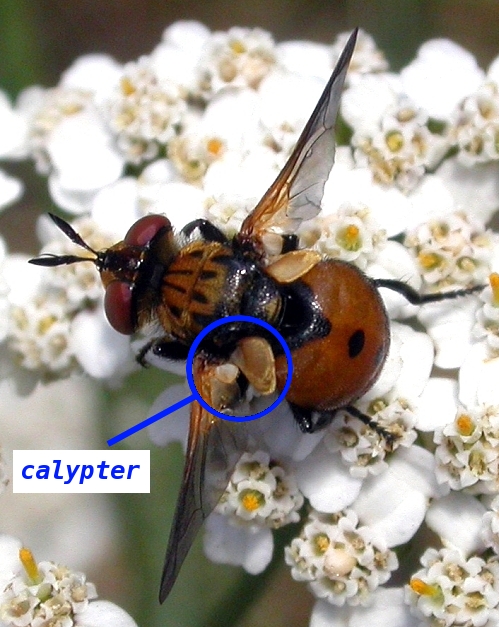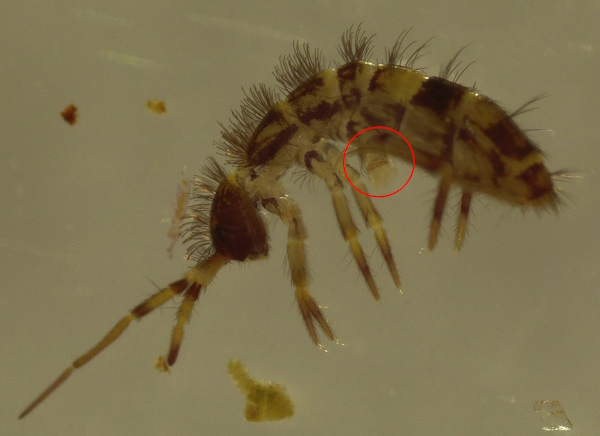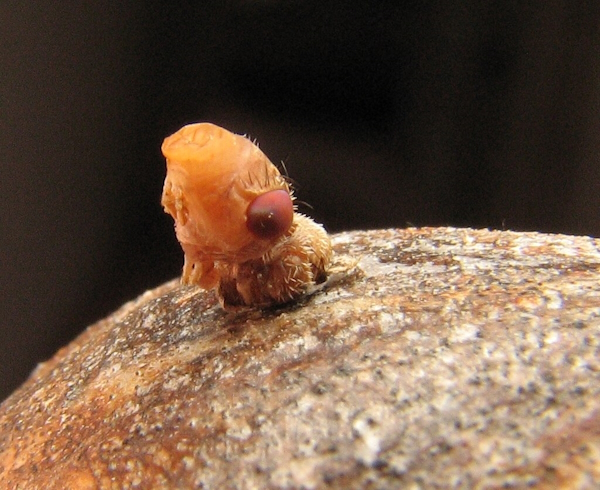Hexapodium: Glossary
Calypter
A calypter is either of two posterior lobes of the posterior margin of the forewing of flies between the extreme posterior wing base and the alula, which covers the halteres.
The lower calypter is the proximal calypter (synonyms: squama (of some authors), tegula) and the upper calypter is the distal calypter (synonym: squamula).

Eurosta solidaginis emerging from goldenrod gall. Notice the ptilinum used to make a hole.
Collophore
A collophore is a tube-like structure on the ventral side of the first abdominal segment of the body of springtails (collembolans). It used to be believed that it served to stabilise the animal when it jumped by sticking to the surface on which it moved. However, the current scientific consensus is that it plays a role in osmoregulation, water intake, and excretion.

Collophore of Orchesella cincta.
Ptilinum
The ptilinum is an eversible pouch on the head, above the base of the antenna in schizophoran flies (a section of muscomorphan and cyclorrhaphan flies). It is used to force off the end of the puparium in order for the fly to emerge, and after this inflation at emergence, the ptilinum collapses back inside the head, marked thereafter only by the ptilinal suture or frontal suture (which defines the aperture through which it everts).

Eurosta solidaginis emerging from goldenrod gall. Notice the ptilinum used to make a hole.
Beatriz Moisset (croped by Abalg), CC BY-SA 4.0, via Wikimedia Commons